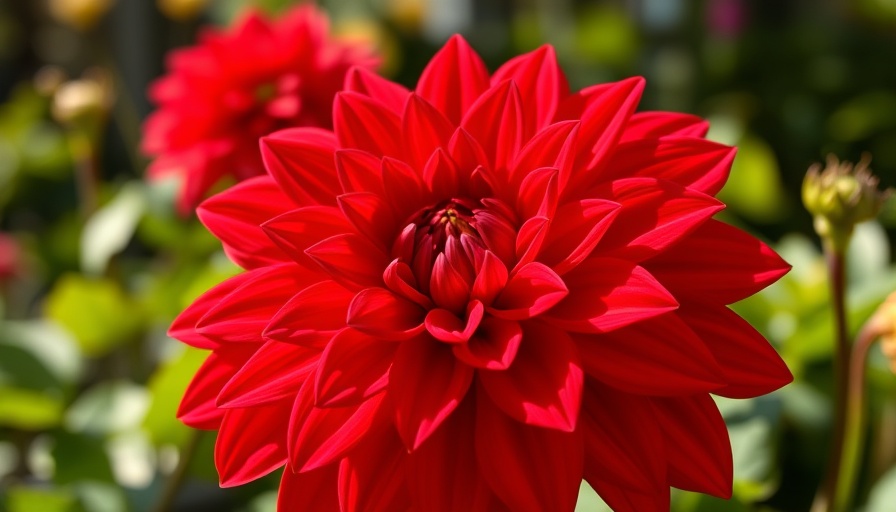
Unveiling the Beauty of Dahlias in Your North County Garden
Dahlias, renowned for their spectacular blooms and varied colors, have won the hearts of many gardening enthusiasts in North County San Diego. However, the journey of growing these vibrant flowers begins with understanding their needs and nuances. By demystifying dahlia planting techniques, you can transform your garden into a kaleidoscope of colors while fostering a sense of community through shared gardening experiences.
The Essentials of Choosing Dahlia Tubers
When venturing into the world of dahlias, the first step is selecting the right tuber. It's essential to know that while dahlias can be grown from seeds, the bloom quality can vary significantly compared to using tubers from established plants. The secret lies in acquiring tubers or roots that hail directly from a mother plant, ensuring your blooms will be true to type.
It's a common misconception that larger tubers yield bigger plants. In reality, a smaller, robust tuber can generate an impressive flower just as effectively. Therefore, focus on tubers that exhibit healthy characteristics rather than their size alone.
Mastering the Planting Process
Once you have your tubers, it's time to get your hands dirty. The key to planting dahlias successfully lies in understanding the anatomy of the tuber: the body, neck, and eyes. When planting, bury the body within the soil while ensuring the neck remains accessible to encourage sprouting. It's essential to remember that dahlias thrive in warmer conditions, typically sprouting within two to three weeks when planted in soil temperatures above 65°F.
Caring for Your Dahlias: A Holistic Approach
After successfully planting, your attention will shift to nurturing your blooming beauties. Protecting your dahlias from pests such as slugs and snails is critical, as these common pests can hinder growth. Utilizing organic deterrents like Sluggo Plus provides an eco-friendly means to keep your plants healthy.
Moreover, the growth of dahlias can be significantly enhanced by regular maintenance. Pinching the growth tip of the central stalk encourages the plant to develop lateral shoots, leading to more blooms. Additionally, investing in trellises or nets at planting time can prevent potential breakages caused by heavy flowers.
Enhancing Dahlia Growth with Proper Nutrition
To support vigorous blooming, dahlias demand ample nutrition. Starting with a solid foundation by mixing in a good quality fertilizer such as Darn Good Fertilizer during planting sets the stage for a flourishing display. Continuous feeding with a liquid fertilizer, like fish emulsion, can sustain robust growth and abundant blooms throughout the season.
Community Connections Through Gardening
For residents of North County San Diego, nurturing dahlias isn’t solely about gardening; it’s also about bonding with neighbors and sharing tips. Local gardening clubs and community events often provide platforms for enthusiasts to exchange experiences, learn, and grow together. There’s one undeniable truth — gardening fosters connections and enhances mental well-being.
Future Trends: Dahlia Gardening in an Evolving Landscape
As we look to the future of gardening in our region, the trend towards sustainable practices continues to gain momentum. Growing your own flowers, including dahlias, aligns beautifully with the goals of reducing carbon footprints and promoting eco-friendly techniques. Embracing native soil amendments and organic fertilizers leads to healthier plants and ultimately blooms that are more vibrant and resilient.
Final Thoughts: Get Started with Dahlias
In conclusion, diving into the world of dahlias is an enriching experience filled with color, beauty, and community. With careful selection, planting, and maintenance of your dahlia tubers, you can enjoy a remarkable gardening journey that is fulfilling and beautiful. As you cultivate not only your dahlias but also connections with fellow gardeners, you’ll be contributing to a vibrant local community. If you're ready to start your dahlia adventure, reach out to local resources and engage with fellow gardeners—it’s time to get planting!
 Add Row
Add Row  Add
Add 




 Add Row
Add Row  Add
Add 


Write A Comment